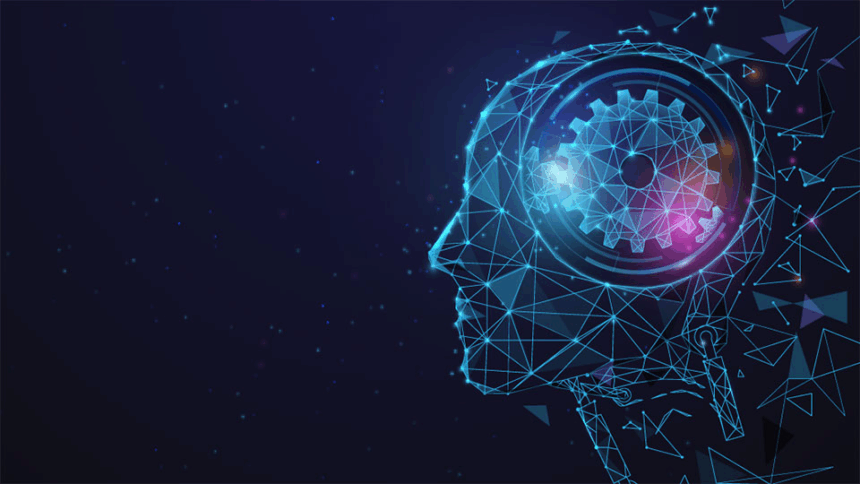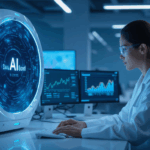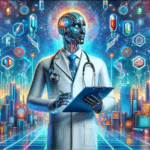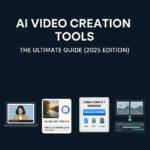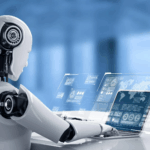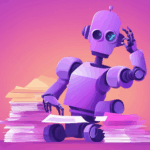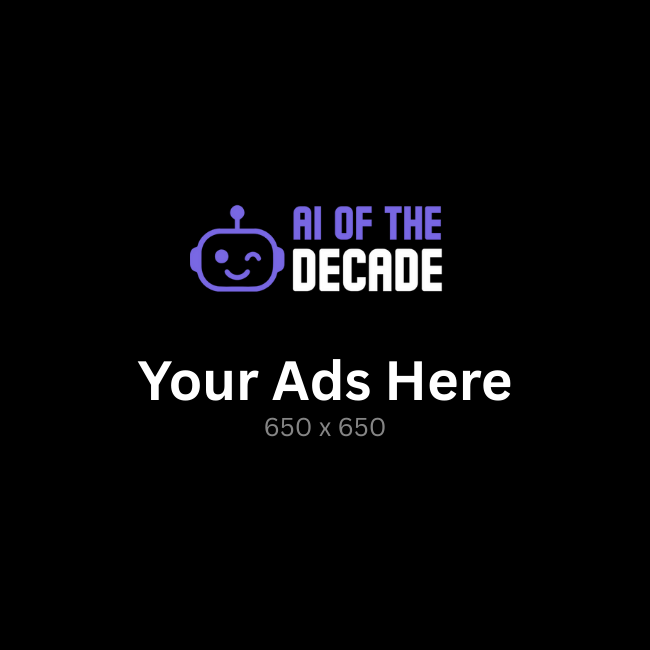By 2030, education will look very different from what we know today. Classrooms are evolving into digitally enhanced learning spaces, where artificial intelligence (AI) is not just an assistant but a driving force in shaping how students learn, how teachers teach, and how schools operate.
The shift from traditional education models to AI-powered learning systems has already begun. From smart tutoring platforms to AI-driven assessments, we’re witnessing a transformation that promises personalized learning, improved accessibility, and better outcomes for students worldwide.
In this article, we’ll explore:
- How AI will influence classrooms by 2030.
- The benefits of AI in education for students, teachers, and institutions.
- The leading AI tools and platforms driving this change.
- Challenges and ethical considerations we must address.
- The future outlook for global education in the next decade.
As AI continues to evolve, education in 2030 won’t just be about memorizing facts and passing exams. It will be about adapting to a world where technology and human intelligence work together to create smarter, more inclusive learning experiences.
The Rise of AI in Classrooms
AI has slowly been making its way into education since the early 2020s, but by 2030 it will no longer be seen as an optional add-on — it will be at the heart of the learning ecosystem.
From Early Experiments to Widespread Adoption
In the 2020s, AI appeared in classrooms in limited ways: grammar-checking tools, adaptive quizzes, and language-learning apps like Duolingo experimenting with chatbots. These early tools showed promise but were often treated as “extras.”
By 2030, however, AI has matured into fully integrated platforms that support teachers, personalize learning, and streamline school administration. Instead of being an optional teaching aid, AI is now a core component of lesson delivery, student support, and assessment.
Why the Shift Happened
Several global trends have accelerated AI adoption in education:
- 📈 EdTech Growth: A booming global market for education technology.
- 🌍 Remote & Hybrid Learning: The pandemic normalized digital classrooms, making AI integration easier.
- 🎯 Personalization Demand: Parents, students, and policymakers want tailored learning rather than one-size-fits-all education.
- 📊 Data-Driven Decision Making: Schools are under pressure to show measurable learning outcomes, which AI makes possible.
The New Role of Teachers
AI is not replacing teachers — it’s reshaping their role. Instead of spending hours on grading or lesson planning, teachers in 2030 rely on AI to handle repetitive work. This frees them to focus on mentorship, critical thinking, and emotional guidance — areas where human connection remains irreplaceable.
The Student Experience in 2030
For students, AI means:
- Access to AI tutors available 24/7.
- Adaptive lessons that adjust difficulty based on real-time performance.
- Multilingual support for diverse classrooms.
- More engaging experiences through AI-powered simulations and virtual labs.
In short, the rise of AI in classrooms marks a shift from rigid, standardized systems to flexible, personalized learning journeys that prepare students for a future where technology and human intelligence work hand in hand.
Benefits of AI in Education 2030
The integration of AI in education 2030 promises to deliver some of the most transformative changes we’ve ever seen in the learning sector. From personalized learning experiences to smarter teaching tools, the benefits extend across students, teachers, parents, and institutions.
Personalized Learning at Scale
One of the most significant advantages of AI in education is personalized learning.
- AI tutors will adapt lessons based on each student’s learning speed and style.
- Struggling students can receive extra practice, while advanced learners can move ahead.
- Learning won’t follow a rigid curriculum but a flexible, AI-guided pathway tailored to every individual.
This ensures that by 2030, no student is “left behind” because of a one-size-fits-all system.
Smarter Teaching Tools for Educators
Teachers are the backbone of education, but administrative work often consumes their time. With AI:
- Lesson plans can be auto-generated with content, quizzes, and multimedia.
- Assignments and tests can be graded automatically, reducing manual workload.
- AI-powered dashboards will provide real-time insights into student progress.
This allows teachers to focus on what matters most: mentorship, creativity, and student engagement.
Breaking Language and Accessibility Barriers
By 2030, AI will make classrooms more inclusive and accessible:
- AI translation tools will enable real-time language support, helping students from diverse linguistic backgrounds.
- Accessibility features (like voice-to-text, AI subtitles, and screen readers) will support differently-abled students.
- Learning materials can be instantly adapted into multiple formats — audio, text, video.
Education will become more global and equitable, opening doors for millions who previously struggled with barriers.
Data-Driven Insights for Institutions
Schools and universities will rely heavily on AI analytics to improve outcomes:
- Predictive analytics will identify at-risk students early, allowing timely interventions.
- Administrators can optimize resources, track attendance, and monitor overall performance.
- Universities can use AI to enhance research, reduce plagiarism, and design smarter curriculums.
With AI insights, institutions can make evidence-based decisions rather than relying on guesswork.
Preparing Students for an AI-Driven Future
Finally, by integrating AI into the classroom, students themselves will gain exposure to the technologies shaping their future careers.
- AI literacy will become as important as reading and math.
- Students will learn to collaborate with AI, not just consume its outputs.
- By 2030, classrooms will be preparing learners for jobs that don’t even exist yet.
Top AI Tools in Education 2030
By 2030, AI-powered tools are no longer experimental — they are mainstream. From adaptive learning apps to AI research assistants, these platforms are revolutionising both teaching and learning. Below are some of the most impactful AI tools driving education forward.
1. Duolingo AI – Language Learning Reimagined
Duolingo started as a gamified language-learning app, but with AI advancements, it has transformed into a personalised language tutor.
- Adaptive lessons: AI analyses mistakes and adapts exercises in real time.
- AI conversation bots: Students practise natural conversations with AI avatars.
- Multilingual support: Real-time translation bridges cultural gaps.
Use Case: Students preparing for global opportunities gain access to immersive, affordable language education anytime.
2. Khan Academy GPT – AI Teaching Assistants
Khan Academy has integrated AI to provide on-demand tutoring at scale.
- Khanmigo AI tutor: Offers explanations, hints, and practice problems.
- Adaptive difficulty: Lessons adjust to student performance.
- Teacher dashboard: Gives educators insights into student progress.
Use Case: A student struggling with algebra can get personalised step-by-step guidance, just like having a private tutor.
3. Coursera AI Tutors – Higher Education Transformation
Coursera has embedded AI tutors into its platform, making online higher education more interactive.
- 24/7 virtual tutors: Answer questions, explain concepts, and quiz learners.
- Personalised course pathways: AI recommends modules tailored to career goals.
- AI grading assistants: Speed up assessments for instructors.
Use Case: Professionals upgrading skills in AI/tech get guided learning experiences similar to a classroom but fully online.
4. Virtual Classrooms & AI Avatars
AI avatars and virtual classrooms are bringing human-like teaching into digital spaces.
- Real-time lectures with AI avatars.
- Interactive simulations for science, history, and vocational training.
- AI presenters available in multiple languages.
Use Case: A rural classroom without subject specialists can still access high-quality lessons from AI-powered teachers.
5. AI for Administration – Smarter Schools
Beyond teaching, AI is streamlining school operations.
- Automated attendance systems using facial recognition.
- AI admissions tools for fairer, faster application processing.
- Smart scheduling for exams and classes.
Use Case: Universities cut admin workload drastically, allowing staff to focus on student engagement instead.
6. AI in Higher Education & Research
AI is reshaping the research landscape.
- AI research assistants help with data collection and summarisation.
- Plagiarism detection powered by machine learning.
- Virtual labs let students run experiments online.
Use Case: A biology student runs advanced simulations without access to a physical lab, levelling the playing field globally.
Challenges & Ethical Concerns of AI in Education
While the benefits of AI in education 2030 are undeniable, there are also serious challenges and ethical considerations that educators, policymakers, and technologists must address. Without proper safeguards, AI could create new problems even as it solves old ones.
Data Privacy and Student Security
AI tools collect massive amounts of student data — from learning progress to personal information.
- Risk of data leaks or hacking.
- Misuse of sensitive information (e.g., health, demographics).
- Compliance with regulations like GDPR or FERPA.
Concern: Who owns student data — the school, the AI company, or the student?
Overdependence on Technology
By 2030, education risks becoming too dependent on AI.
- Students may rely on AI tutors instead of developing independent problem-solving skills.
- Teachers may become over-reliant on automated lesson plans.
- Tech failures could disrupt entire classrooms.
Concern: How do we balance AI efficiency with human critical thinking?
Bias in AI Algorithms
AI is only as unbiased as the data it is trained on. In education, this could lead to:
- Unequal recommendations for students from different backgrounds.
- Cultural or linguistic biases in AI tutors.
- Reinforcement of stereotypes.
Concern: Could AI unintentionally widen the education gap instead of closing it?
The Human Touch vs. AI Automation
Education is not just about knowledge transfer — it’s about empathy, mentorship, and social learning.
- AI can’t replace the role of teachers as role models.
- Emotional intelligence, creativity, and values are best taught by humans.
- Students may lose social interaction if AI tutors dominate.
Concern: Will classrooms lose their “humanity” if AI becomes the primary educator?
Accessibility & Cost Divide
While AI makes education scalable, not all regions can afford advanced AI tools.
- Wealthy schools may adopt AI faster, widening inequalities.
- Underfunded schools risk being left behind.
Concern: Will AI create a digital divide between privileged and underprivileged students?
The Future of Classrooms – What Will Education Look Like in 2030?
By 2030, classrooms will be radically different from the ones we know today. With AI in education 2030 taking centre stage, the future learning environment will be a hybrid of human expertise and artificial intelligence, designed to make education more inclusive, interactive, and outcome-driven.
Hybrid Learning Models as the Norm
The pandemic of the early 2020s accelerated the adoption of online and hybrid learning. By 2030:
- Classrooms will blend in-person lessons with AI-powered virtual experiences.
- Students will seamlessly switch between physical classes and AI tutors available 24/7 online.
- Virtual reality (VR) and augmented reality (AR) will integrate with AI, allowing immersive science experiments, history tours, and skill simulations.
Example: A student in India can attend an AI-powered live lecture from a top professor in the U.S. while interacting in real-time with classmates worldwide.
Global AI Teachers and Avatars
Teachers will remain vital, but they will be augmented by AI avatars that:
- Deliver lectures in multiple languages.
- Adapt content complexity for different learning levels.
- Provide individual support while teachers focus on group discussions and mentorship.
Example: An AI avatar explains quantum physics in simple terms for beginners, while the teacher facilitates deeper critical thinking exercises in class.
AI-Powered Lifelong Learning
Education will no longer be confined to schools or universities. By 2030:
- AI will help adults reskill and upskill continuously, adapting to the fast-changing job market.
- Learning platforms will offer personalised micro-courses for workers, entrepreneurs, and lifelong learners.
- Employers will rely on AI-driven education platforms to keep their workforce updated.
Example: A mid-career professional uses AI to master new programming languages through a personalised weekend course tailored to their learning pace.
More Inclusive and Accessible Education
AI will break barriers of geography, language, and disability:
- Students in remote areas can access world-class AI tutors.
- Real-time translation ensures multilingual classrooms.
- Students with disabilities will benefit from AI accessibility tools like speech recognition, text-to-voice, and adaptive interfaces.
Example: A visually impaired student learns mathematics using an AI-powered tactile and voice-assisted learning platform.
The Human + AI Partnership
The most important shift is that education in 2030 won’t be about AI replacing humans, but about AI and teachers working together.
- AI handles repetitive tasks like grading, attendance, and basic tutoring.
- Teachers focus on mentorship, creativity, emotional support, and critical thinking.
- Students grow up in classrooms that prepare them for an AI-powered world while still valuing human empathy.
FAQs on AI in Education 2030
1. What is AI in education?
AI in education refers to the use of artificial intelligence to improve teaching, learning, and school management. It includes tools like AI tutors, smart grading systems, chatbots, predictive analytics, and adaptive learning platforms.
2. How will AI change education by 2030?
By 2030, AI will make education more personalised, accessible, and data-driven. Students will have 24/7 AI tutors, teachers will use AI to save time on admin tasks, and schools will rely on predictive insights to improve outcomes.
3. Will AI replace teachers by 2030?
No. AI will support teachers, not replace them. It will handle repetitive tasks like grading and attendance, while teachers focus on mentorship, creativity, and emotional guidance — things AI cannot replicate.
4. What are the benefits of AI in education 2030?
- Personalised learning pathways.
- Faster grading and feedback.
- Improved accessibility with real-time translations.
- Predictive analytics to support at-risk students.
- Cost-effective and scalable education solutions.
5. What challenges does AI in education face?
Key challenges include:
- Data privacy concerns.
- Risk of overdependence on technology.
- Bias in AI algorithms.
- Limited access in underfunded regions.
6. Which AI tools will be most popular in education by 2030?
Leading AI tools include:
- Duolingo AI → Language learning.
- Khan Academy GPT → AI tutoring.
- Coursera AI tutors → Higher education.
- Synthesia & Virtual Classrooms → AI avatars for teaching.
- AI Admin Tools → Attendance, admissions, scheduling.
7. How will AI improve student learning outcomes?
AI will adapt lessons in real time, provide instant feedback, and ensure students progress at their own pace. This individualised attention helps weaker students catch up while allowing advanced learners to move faster.
8. Is AI education affordable for everyone?
Basic AI tools are already free or low-cost, but advanced AI systems may still be expensive. By 2030, however, increasing adoption should make AI tools more accessible worldwide.
9. What role will AI play in higher education and research by 2030?
AI will support advanced research through data analysis, plagiarism detection, and simulation labs. It will also create more personalised online higher education experiences with AI-powered tutors.
10. What is the future of AI in education beyond 2030?
Beyond 2030, AI will likely integrate with virtual reality, augmented reality, and robotics to create even more immersive classrooms. Education will become lifelong, with AI helping people continuously upskill throughout their careers.
Conclusion – The Path Ahead
The year 2030 represents a turning point in the history of education. With AI in education 2030, classrooms will no longer be restricted by walls, rigid curriculums, or traditional teaching methods. Instead, they will become dynamic, inclusive, and personalised ecosystems powered by artificial intelligence.
We’ve seen how AI can:
- Create personalised learning journeys for every student.
- Empower teachers with smart tools that save time and improve efficiency.
- Break barriers of language, geography, and accessibility, opening education to all.
- Provide data-driven insights for institutions to make smarter decisions.
- Prepare students for a future where AI will be central to work and society.
Yet, this future also comes with challenges — from data privacy and algorithmic bias to the risk of overdependence on technology. The most successful education systems of 2030 will be those that balance AI efficiency with human creativity, empathy, and mentorship.
The classrooms of tomorrow will not be about AI versus teachers, but rather AI and teachers working side by side to create the best possible outcomes for learners.
👉 As we step into this new era, one thing is clear: AI is not the future of education — it is the present, rapidly shaping the decade ahead. Those who embrace it thoughtfully will lead the way in building a smarter, more inclusive, and more innovative world of learning.

